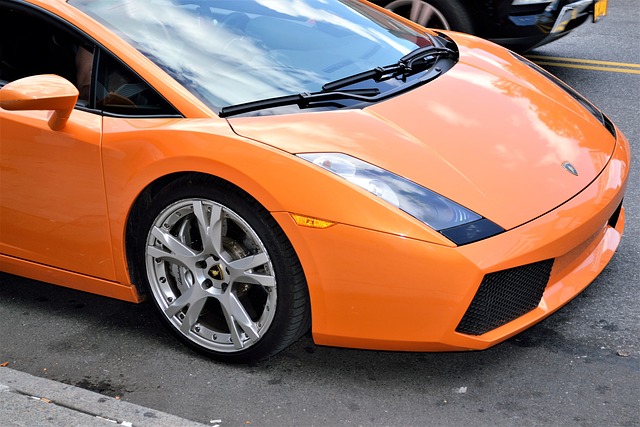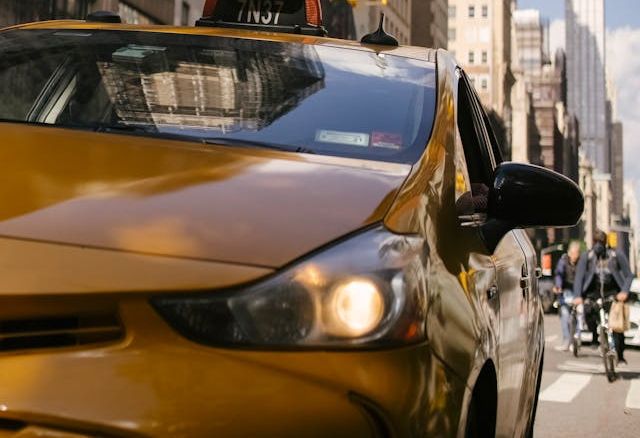The enigma of window tinting laws often bewilders vehicle owners, chiefly as they fluctuate substantially from one jurisdiction to another. It’s crucial for motorists to gain comprehensive understanding of these laws, in particular the ambiguity surrounding “can you tint your front windshield in Illinois?” – a question that seems to arise frequently. The establishment of these rules was not merely for cosmetic purposes but more significantly, to ensure safety for all who traverse our roads.
In the state of Illinois, there is allowance for car owners to shade their windows; however, quantifiable restrictions are enforced on how much the glass surfaces can be tinted, particularly when it comes down to windshields. These limitations are steered by visible light transmission (VLT) percentages deemed safe enough for adequate visibility while journeying through highways and lanes. Gaining insight into these window shading regulations and maintaining compliance within their confines is vital in steering clear from penalties.
The Basics of Automobile Window Tinting
Grasping the regulations and complexities of car window shading is a crucial understanding for those behind the wheel. The appeal of window tinting, often visually pleasing while also acting as an effective barrier against harmful sun rays and glare reduction, must be in harmony with specific regional laws. This balance between utility and legality safeguards not just drivers but pedestrians and law enforcement agents too.
As to whether windshield tinting in Illinois is legally permissible or not – the answer isn’t exactly cut-and-dried. Illinois parallels other states by instituting its unique set of rules that dictate how vehicle windows can be shaded. In determining what aligns with the legalities surrounding window shading within Illinois boundaries, several factors come into play: the precise degree of shade, its hue, along with where it’s applied on the automobile are all vital considerations. It’s essential for each driver to have a firm grasp on these laws to steer clear from infringements that could lead to penalties or even legal repercussions.
Illinois Vehicle Code and Windshield Tinting

In the labyrinth of automotive alterations, a lucid grasp of governing edicts is absolutely vital. The state of Illinois, akin to its counterparts across America, has put into effect precise laws pertaining to automobile window darkening measures. These rules are designed with a dual purpose – safeguarding the well-being of those behind the wheel and their passengers whilst ensuring that those in law enforcement have an unobstructed view.
The windshield tint legislation in Illinois forms but one piece in this intricate regulatory jigsaw puzzle. This specific decree delineates what degree of shading is permissible on different windows within a vehicle – paying particular attention to the front shield. Elaborately laid out with the aim to preserve driver visibility, mitigate harsh reflections as well as maintain transparency for police officers during roadside checks; every nuance of this rule finds itself etched into cold hard stone within the confines of the Illinois Vehicle Code.
However, it is not enough just being written down once: regular revisiting and reviewing become incumbent upon vehicular owners for steadfast obedience.
How Dark Can You Tint Your Windows in Illinois
In the realm of Illinois, cognizance is paramount regarding the state-specific stipulations that govern window tinting, a matter of particular interest to those contemplating an application of film on their vehicle’s windows or windshields. These regulations are rooted in the Illinois Vehicle Code and serve as safeguards for all who navigate its roads by preserving clear vision—thus prompting us to delve into this intricate topic: Is it permissible to tint your windshield in Illinois?
When we broach the subject of just how much you can darken your car windows within this state, one must adhere to a law stating that at least 35% visible light transmission (VLT) is required through these panes. In essence, no more than 65% of incoming light should be obstructed by any applied tint. Shifting focus specifically onto windshield tinting reveals an allowance for a non-reflective finish across the uppermost six inches only. Additionally, tints bearing a red, amber or yellow coloration are explicitly prohibited under these guidelines—all aimed towards achieving prime visibility conditions for drivers whilst simultaneously providing solar protection benefits.
In light of these regulations, it is essential to understand the specific legal requirements for window tinting in Illinois:
- The law mandates a minimum 35% visible light transmission (VLT) through car windows. This means that any applied tint should not obstruct more than 65% of incoming light.
- When it comes to windshield tinting, only the uppermost six inches are allowed to have a non-reflective finish.
- Tints with red, amber or yellow coloration are strictly prohibited under Illinois law.
These rules aim to ensure optimum visibility conditions for drivers while also offering protection from harmful solar rays. However, there exist certain exceptions which allow darker tints:
- Medical exemptions: In some cases, individuals with specific medical conditions may be permitted to use darker tints on their vehicle’s windows.
- Rear windows: For SUVs and vans, the rear windows can be tinted darker than the front ones as long as they meet all other stipulations set forth by state laws.
The Role of Visible Light Transmission in Window Tinting
In the intricate intricacies of window tinting processes and regulations, Visible Light Transmission (VLT) assumes a pivotal role. This metric quantifies the quantum of visible light that is permitted to traverse from exterior to interior through the garment which essentially determines how dark or transparent the window appears. The VLT percentages are not constant but rather vary according to state laws, thereby stipulating necessary VLT for window tints in an effort to ensure safety for all road users as it affects driver’s ability to see and be seen clearly.
As we delve into the nuanced question of “is front windshield tint legal in Illinois”, we find ourselves entwined with VLT percentages. According to Illinois Vehicle Code, window tinting does enjoy legality; however, it comes with stringent stipulations. More than 35% light transmission must be allowed by front side windows and windshield alike. These specific requirements are geared towards maintaining safe visibility levels for drivers – a crucial factor under adverse weather conditions or during nighttime driving. Consequently adjusting VLT percentages for window tinting becomes akin to juggling aesthetic preferences, privacy needs and regulatory compliance.
Medical Exemptions for Windshield Tinting in Illinois
In the sphere of Illinois, particular health anomalies could potentially instigate exceptions to the stringent regulations concerning window tinting. Consequently, ascertaining whether it is legitimate to shade your windshield in Illinois isn’t straightforward–the reply has layers of complexity. For most denizens, there are definite boundaries on the degree of darkness that can be employed for window tints. Nonetheless, those with certain medical prerequisites might qualify for an exception.
For such exemptions to be contemplated, documentation from a qualified healthcare specialist establishing the need for darker window shades due to health issues—such as skin sensitivity disorders—is indispensable. These special allowances present eligible individuals with opportunities for potentially utilizing darker shades on their vehicle windows. Yet it’s imperative not to lose sight of safety and visibility—the cardinal reasons behind implementing these tinting mandates across Illinois.
Penalties for Violating Window Tinting Laws in Illinois
The transgression of window tinting regulations in Illinois is met with no slight hand by the forces of law across the state. Transgressors usually face a spectrum of punitive measures that might envelop both financial sanctions and legal consequences. The magnitude of these penalties often hinges on how far one infringes upon the Illinois windshield tint legislation, coupled with any prior offenses for similar misconduct.
In terms of first-time offenders, it’s common practice for Illinois jurisdiction to impose a pecuniary penalty varying anywhere between $50 – $500. Beyond this monetary setback, the offender may also be mandated to eradicate the illegal tint from their windows; an act necessitating further spending since professional services are likely needed to prevent inflicting damage during removal procedures. For those who have previously been convicted, they should brace themselves for more severe punishments including escalated fines and stricter requirements surrounding violation rectification.
FAQs
The basic principles governing window tinting regulations within Illinois align with the state’s Vehicle Code, outlining acceptable levels of tint, significance of visible light transmission and potential exceptions.
In Illinois, there exists a varying scale of permissible darkness for your vehicle’s windows depending on its type and position. To ensure you abide by these rules, it is recommended to consult the specific details within the Illinois Vehicle Code.
Visible Light Transmission or VLT pertains to how much light your car windows permit through them. This minimum VLT percentage differs based on each state’s individual legislation.
Indeed, certain health conditions may qualify individuals for exemptions allowing darker shades under the law established by the state of Illinois. However, such instances necessitate suitable documentation validating these claims.
Those found contravening the stipulated guidelines regarding window tints could face penalties ranging from financial sanctions to compulsory removals of noncompliant tints. Frequent violations might result in more severe consequences.
You should seek advice from expert window tinting services well-versed in Illinois regulations or alternatively refer to the Illiniois Vehicle Code. It is imperative that your chosen shading falls within the legal limit.
Non-compliance with penalties related to infractions against window tinting legislation may result in further fines, possible court proceedings escalation and potential suspension of driving rights.
